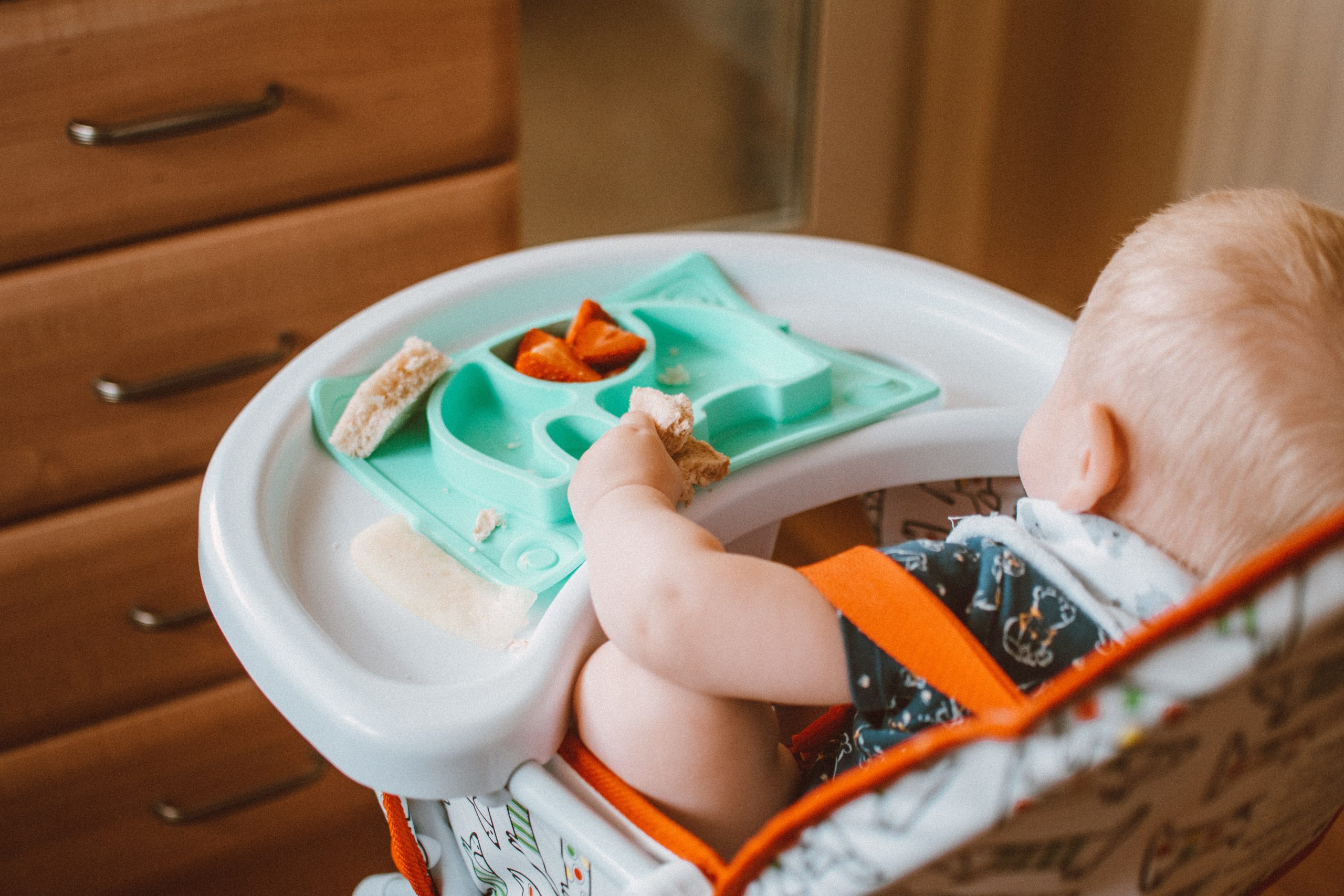How To Help Your Infant Feed Themselves With Baby Led-Weaning

Children and food are always a fun stage of their early lives. Experimenting with different textures and tastes can be hilarious too. So when it comes to getting your baby onto solids, it is a fun and exciting stage, yet terrifying too for some parents. The days of purees are going out the window for a more healthy and nutritious baby-led weaning process. Don’t fear though, in this article, we will go through all the relevant information that you need to know.
Baby-led weaning is a process that is becoming increasingly popular in the UK and USA, it is the process of skipping out mashed foods and purees and giving your baby finger foods at the age of 6 months or over. It is called baby-led weaning due to us parents allowing the child to feed herself the healthy foods you are giving them which encourages them to be less fussy later on as well as teaching them how to chew first, then swallow.
Encourages babies to become familiar with a range of different textures and flavours:
This will help them to be accustomed to various flavours and textures which will lead them to not be fussy eaters when they get older. There has been a range of different studies that show that feeding your baby a variety of foods including fish and peanut products can reduce the risk of food allergies later on in life. Children are much more susceptible to peanut and fish allergies so consult a doctor before them.
Baby-led weaning allows babies to self regulate their intake of food based on their hunger. This is very much like breastfeeding and results in lower chances of being overweight compared to spoon-fed children. This is due to when spoon-feeding, the parents are in control which makes the baby eat faster and more than they need. This then can encourage the baby to ignore fullness feelings which will, in turn, get the eating more later on in life.
Experts suggest that you should start weaning at around 6 months as this is when they can sit up and grab objects. Babies also have a tongue thrust reflex which pushes foreign objects out of the mouth which after around 6 months has stopped. This is only for babies where they don’t require special needs. But for you to begin this weaning process it is best to speak to your baby’s pediatric nurse.
As nervous as you may be about your 6 month-old having solids straight away, but I promise you will be amazed by what your little one can achieve. So get your weaning bib ready because it’s going to get messy.
Continue To Nurse or Bottle Feed: Keep the same routine and frequency as babies get most of their nutrients from either breast milk or formula for the first year.
Skip The Schedule: Many suggest that you should put your baby on a feeding schedule that uses breast milk plus three meals of solids a day. If you choose baby-led weaning, then this is a little different. Carry on with the breastmilk or formula but at mealtimes, offer them solids and if they don’t want it let them leave it.
Keep It Soft: The food should be soft for the first couple of months as they don’t have any teeth yet. They should be soft enough for them to be able to smush in their fingers, dissolve or have a sign that your baby will be able to gum. Steer away from crunchy or hard like carrots and apple slices.
Prepare Food According To Your Child’s Age: If you are starting to wean at 6 months old, then the food should be cut into thick sticks so they can pick them up and eat from top to bottom. Whereas if they are starting at 9 months and have developed their grasping skills, then you can start to cut the food into bite-size pieces.
Dine Together: If you are having a meal of steamed fish and broccoli, then there is no reason why your baby can’t have a little bit too. If your baby is wanting something off your plate, give them a small portion so that they can mimic how you are eating things.
Offer A Variety Of Foods: It goes without saying, but over time you should start to introduce a range of different foods with different flavours, textures and colours such as steamed green beans, soft pasta and watermelon. Don’t be afraid to make the foods fun using shape cutters. This will encourage your child to be less fussy later on in life. It’s essential to have at least one high iron food per meal for the body’s development.
It is essential to understand what types of foods your baby can have at what age so that you don’t push too much on them too quickly, but also to encourage them to have more than what you may think is too hard.
If you have been wondering when to start weaning and also what to feed them, well I hope this helped you. Baby-led weaning is a tough and scary time, but it will be completely worth it in the long run. Just remember to keep everything simple and let them try new foods and feed themselves. Also, try and allow them to mimic your movements so they can start to eat correctly.
